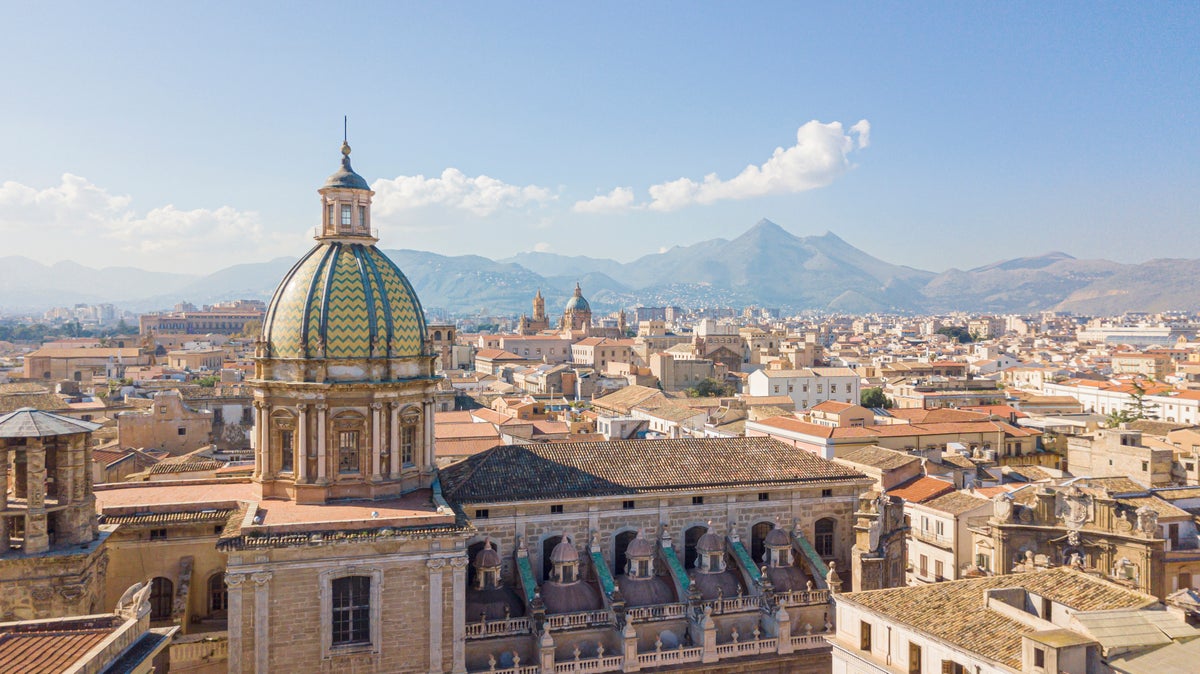
Palermo is quite possibly the most underrated city in Italy. It’s not for the fainthearted, but it’s sure got swagger. Sexy, scruffy and slightly addictive, Palermo rewards the traveller who takes the time to get to know it. Slender side streets emerge into crumbling squares lined with palazzi, and terracotta-toned landmark buildings embellish Palermo’s low-rise skyline.
Cultures from the Middle East, Europe and Africa have influenced everything, from food to architecture to dialect. One glance reveals the architectural layers of who came and conquered: Phoenicians, Normans, Turks, Egyptians, Arabs and Spaniards. All of life is here in Italy’s most ethnically diverse city. Here’s how to best experience it.
Best things to do
Computer culture
You don’t have to be a nerd to find MEC (Meet, Eat, Connect) a fascinating way to pass an hour or two. Housed in the 16th-century Palazzo Castrone, across from the Arab-Norman cathedral, this museum-restaurant concept fuses tech and fine food. Architect Giuseppe Forello has one of the largest Apple collections in Europe, a fraction of which appears in this exhibition tracing the firm’s history, with a range of original Macs, iMacs and iPads – along with Steve Jobs’s trainers, jeans and watch. Every evening except Sunday, chef Carmelo Trentacosti (formerly at Rocco Forte’s sumptuous Villa Igiea hotel) dishes up an avant-garde tasting menu celebrating Sicilian flavours, which recently won him a well-earned Michelin star.
Read more on Italy travel:
- Ultimate Italy travel guide: Everything you need to know before you go
- Forget Naples – why pizza-lovers should stay at its under-the-radar neighbour
- What it’s really like to buy a house through Italy’s ‘one euro’ homes scheme
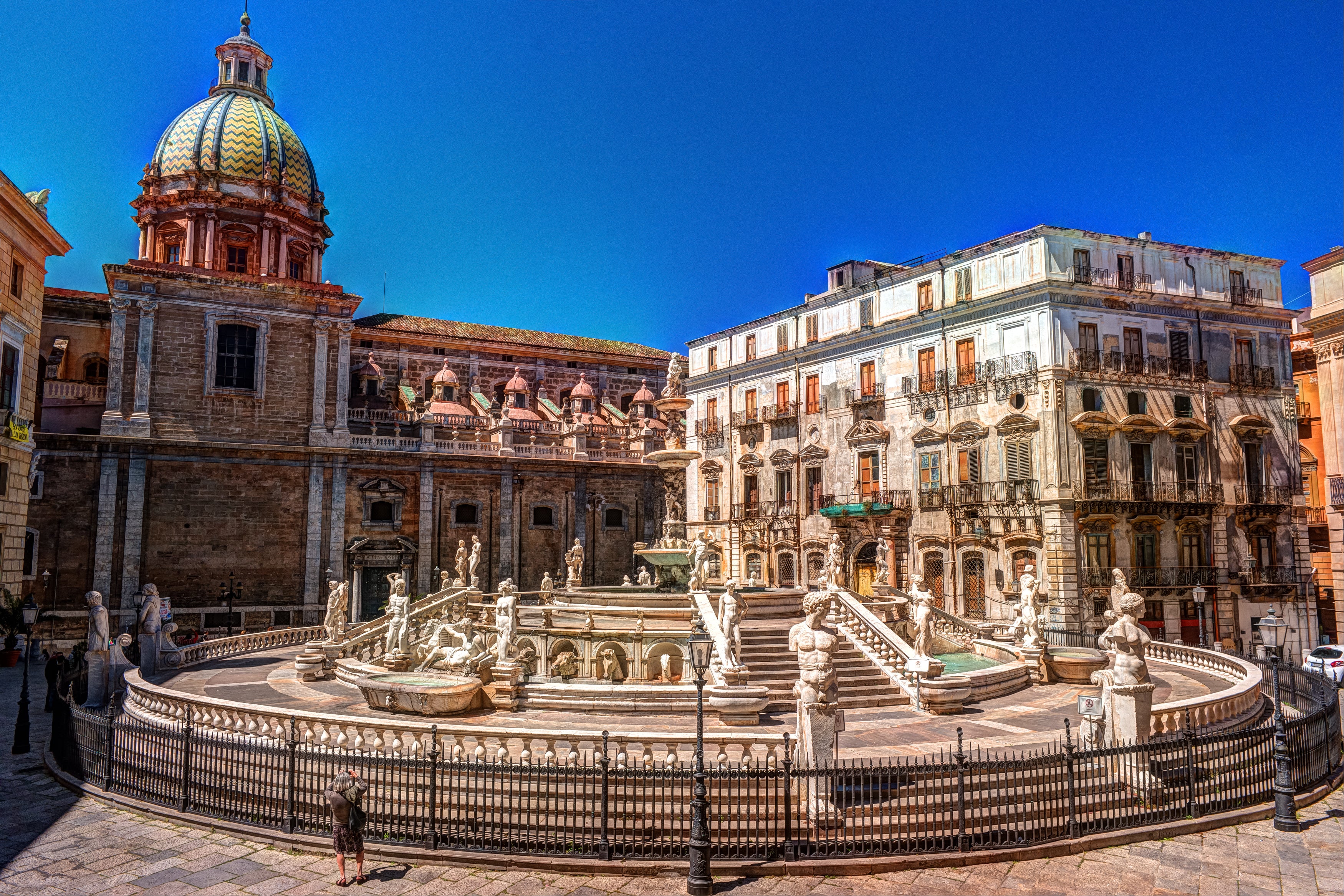
Food for thought
Culinary Backstreets’ food-based walking tours are the best way to get an authentic taste of a place, load up on the famous (and lesser-known) dishes and learn fascinating facts as you go. “Savouring Palermo: In the Markets and Beyond” is their latest tour (£107 for adults); plugged-in local guides take you to places only a local would know about for mozzarella and anchovy-stuffed panzerotti rolls and panelle, deep-fried chickpea flour fritters, a fine example of early Arabic influence. Keep your belt loose for sfincione, thick pizza-meets-focaccia flavoured with sweet onion, oregano and various cheeses, from creamy ricotta to salty caciocavallo. There’s also a strong cultural element, with stops at a puppet workshop, creating handmade dolls from wood and metal for the daily shows, and a fifth-generation carob sweet factory.
Urban art
Migrants past and present are celebrated in multicultural murals around the city. In La Kalsa historic Arab quarter, one of the oldest areas in the city, housing blocks feature an homage to Federico II, known for his inclusion, and the face of a beautiful black woman, her head covered and a golden halo-like design glowing behind.
Near Ballaro market, in the Albergheria district, a tiny hummingbird lifts the impossible, picking up an enormous rock with its wings. Nearby, the towering mural of brown-skinned Saint Benedict the Moor guards the residential square and football pitch.
Best time to visit
Although Palermo is a year-round destination, late spring and early autumn are peak seasons as the Mediterranean heat, ramped up by the sirocco wind, is less intense. Low season – from November to April – brings reduced hotel rates and fewer crowds.
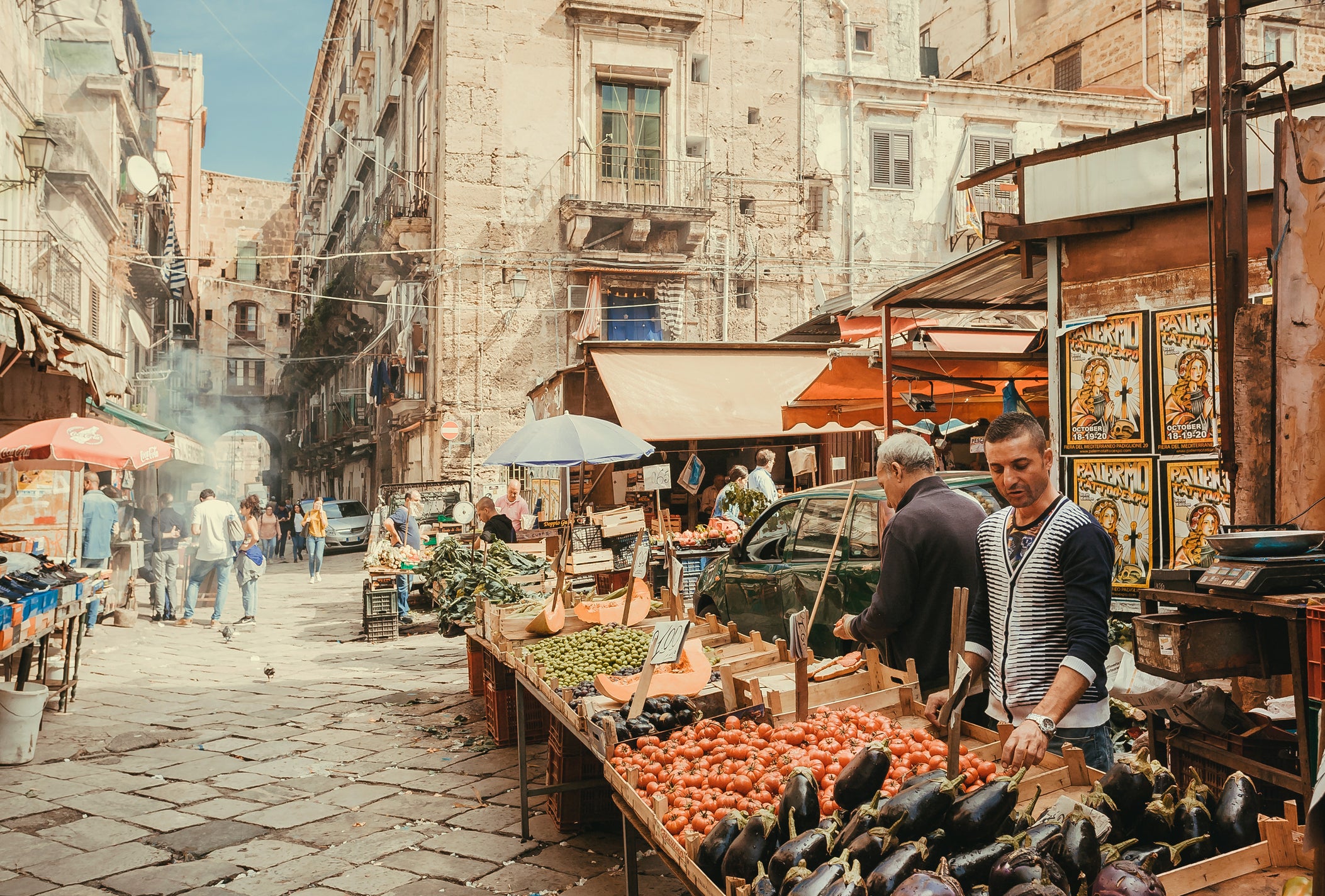
Where to stay
B&B Sant Agostino
On a narrow side street near the opera-hosting Teatro Massimo, this art-filled B&B is close to culture. B&B Sant Agostino, at the top of a 19th-century palazzo, is a charming series of rooms and suites, all different: some with four-poster beds, beams and rooftop views framed by tiny windows, some with two levels, lounges and sofa beds. All have access to pretty, plant-filled terraces and the fresco-ceilinged room where homemade breakfast is served each morning. santagostinobb.it
Rooms available from{{#price}}{{price}}per night{{/price}}{{^price}}Check availability for dates and prices{{/price}}
Rates provided by Booking.com
Grand Hotel et des Palmes
Top marks to the history-filled Grand Hotel et des Palmes on a stellar renovation of this Art Nouveau mansion, once home to the Ingham-Whitakers wine sellers (also where Wagner composed his final opera). The sensitive reviving – and blending – of original features with a fresh, modern design creates a glamorous spot on the busy Via Roma. Hand-painted wallpapers and gilt-edged mirrors mix with burgundy velvet sofas and honey-hued oak flooring. Start each day in the glass-roofed Winter Garden, dining on Sicilian specialities such as cannoli (cream-filled pastry horns). grandhotel-et-des-palmes.com
Rooms available from{{#price}}{{price}}per night{{/price}}{{^price}}Check availability for dates and prices{{/price}}
Rates provided by Booking.com
Villa Igiea
This Belle Époque palazzo-turned-Rocco Forte resort on the Bay of Palermo is a calming contrast to the city buzz. You’ll find fanciful turrets, terraced gardens fragrant with orange, lemon and olive trees, a curved pool and suites dressed up by Olga Polizzi with sea-facing terracotta-tiled terraces. Original frescoes, antique doors and handmade tiles are as impressive as the Sicilian menus laced with local ingredients; that, plus the smiley service and perfumed public spaces. roccofortehotels.com
Rooms available from{{#price}}{{price}}per night{{/price}}{{^price}}Check availability for dates and prices{{/price}}
Rates provided by Booking.com
Where to eat
Sicilians love their ice cream so much they eat it for breakfast, adding scoops of the sweet stuff to a round brioche bun. It’s not hard to find a kiosk peddling gorgeously creamy jasmine or cinnamon gelato, but if you’re by the harbour, try Gelateria Rorò in Piazza Marina, which also offers vegan flavours.
Near the other side of the port and opened in 1951, Piccolo Napoli is a neighbourhood trattoria with white tablecloths and walls hung with black and white family photos (including the current generation of owners). The slightly unloved terrace is made up for by simple Sicilian dishes, from warm sesame-coated bread dusted with oregano to fresh tuna steaks, spaghetti nero di seppia (squid ink) and that sweet and salty combination of aubergine, basil, celery, capers and tomato that make up the classic caponata.
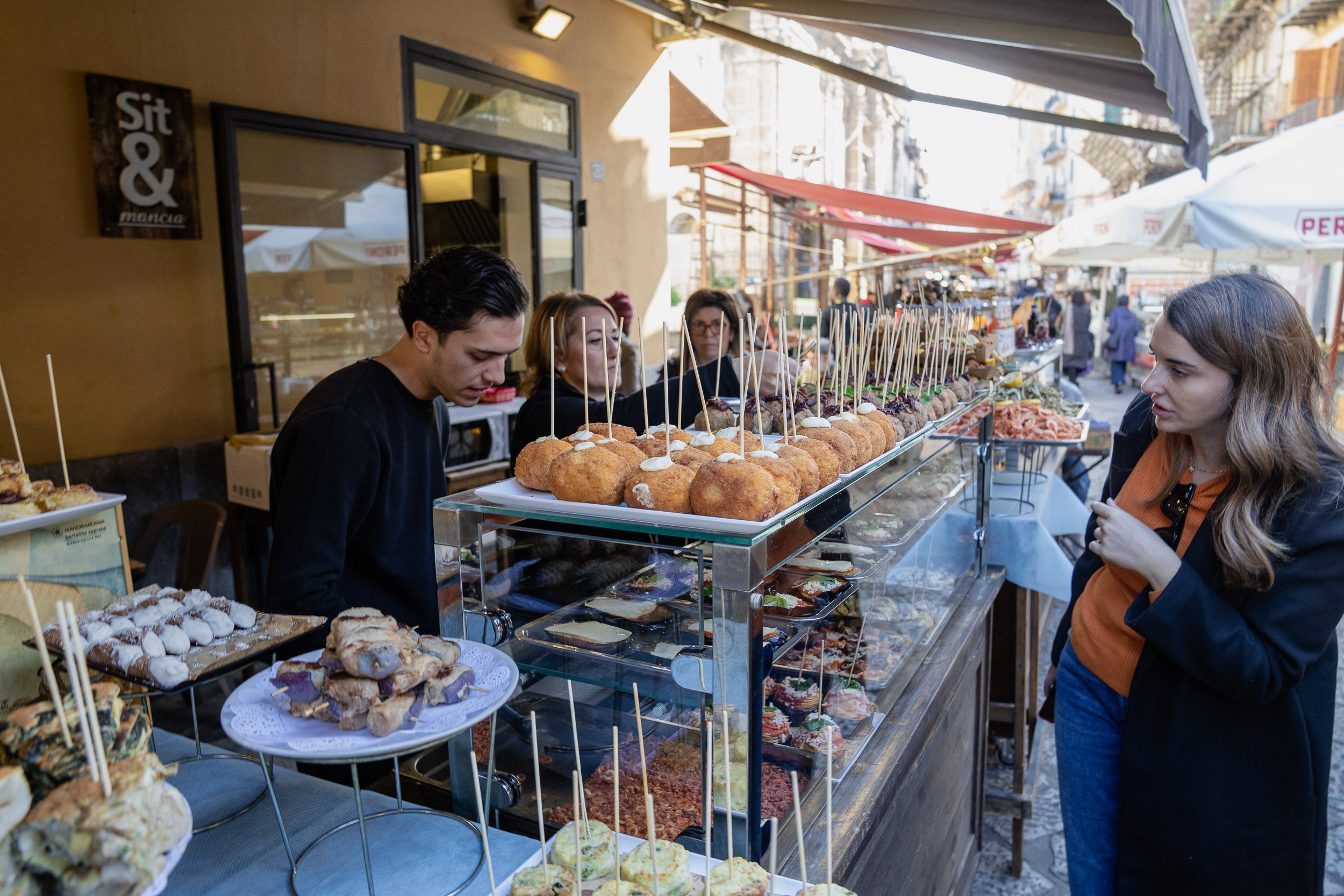
Spleen sandwich anyone? Nni Franco U Vastiddaru, on the corner of Via Vittorio Emanuele and the ficus-shaded Piazza Marina, is full of locals tucking into the aforementioned boiled cows’ innards with lemon and salt or ricotta and caciocavallo cheese. If not, order arancini, deep-fried risotto rice balls filled with a tasty mix of ragu, green peas and mozzarella.
The rose-filled gardens of the Santa Caterina convent are the perfect place for experiencing heaven-sent Sicilian sweet treats such as cassata (sweetened ricotta sponge cake). The I Segreti del Chiostropasticceria uses once-secret recipes that helped the cloistered Dominican nuns who lived in the apartments overlooking the courtyard generate an income.
Where to drink
The barman at Deca Bistro mixes colourful cocktails with speed and flair among the whitewashed walls and industrial-style seating. On balmy nights, sit on the terrace that eats up a large portion of Piazza Giovanni Meli. Sip a cooling, colourful spritz beside the colossal Baroque San Domenico church, where namesake poet Giovanni Meli is buried.
Sciampagna is a fancy cake shop on Via Riccardo Wagner, with a photogenic array of fruit-and-macaron-topped celebration cakes downstairs and marble, white and Barbie pink decor in the upstairs cafe. Sip a bitter espresso to soften the sweetness of their torta setteveli, a rich glossy affair layering chocolate and hazelnut, usually eaten for birthdays.
Circi is a kiosk-meets-cafe by Piazza Beati Paoli with a smattering of chairs and tables where you can rest street-weary feet with a classic Palermitan acqua e zammù (water and star anise spirit). It’s served as a digestivo or refreshing drink, which turns cloudy if stirred.
Where to shop
Palermo’s markets are full of life. Vucciria is the most famous and popular with tourists – at night it’s like a street party. Ballarò, the biggest and most alluring, it’s where Palermitans shop. Capo, which extends through the labyrinth of streets in the Albergheria and Capo neighbourhood, is big on fresh fish. All are noisy, set to a soundtrack of shouty sellers imploring you to buy their Nocellara olives, pistachios or squeezed-to-order juices; radios blare, people sing, a man stands peeling prawns to an audience of filming iPhones, and the air is heady with everything from fresh fish to sweet, dried oregano.
Citrus trees brought to Sicily by the North African Muslims in the 11th century thrive in the fertile volcanic soil. The Bay of Palermo was once called the Conca d’Oro (Shell of Gold) for the bright hue and wealth created by Sicilian lemons, which supply the majority of Italy. On Via Vittorio Emanuele, Cassaro Bottega Alimentare is a little lemon-focused store with lemon-shaped and scented soaps, pasta and limoncello. A few tables in the back patio offer a sweet spot for an aperitivo.
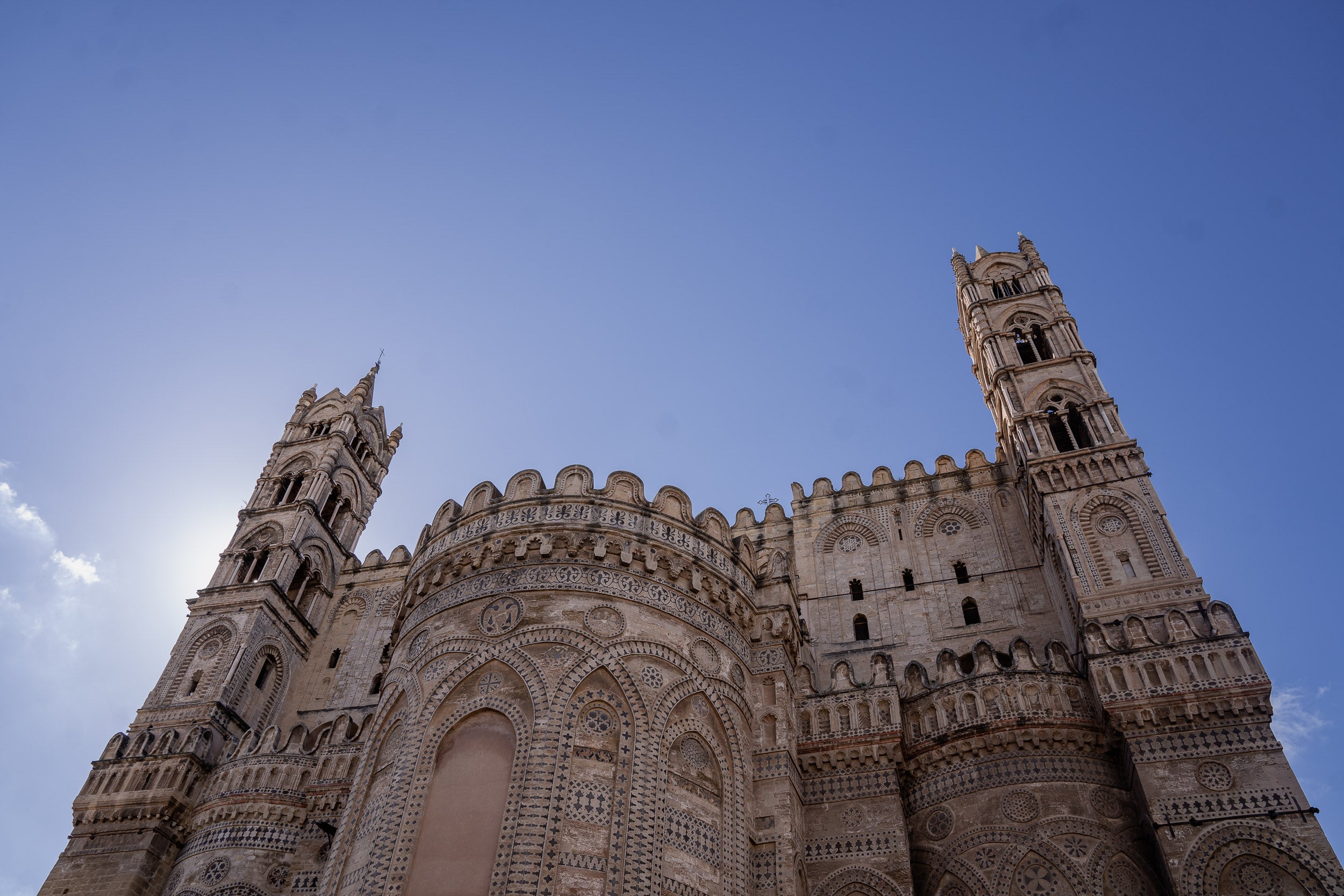
Getting around
The condensed and compact city is easy to explore on foot, with car-free streets and skinny alleys you can’t get down any other way (mind the scooters). AMAT buses run all over the city, with €3.50 (£3) tickets valid all day.
Architectural highlight
On paper, it’s a hot mess, with multiple layers of crenellations, porticos and geometric patterns reflecting different builders who’ve meddled over the centuries, but the Cattedrale di Palermo (Palermo Cathedral), a Unesco World Heritage Site, is a charmer. The mix of Romanesque, Norman, Gothic, Baroque and Neoclassical presiding over the far end of the Via Vittorio Emanuele, is impressive by any standard, and the tourist-topped roof terrace one of the best viewpoints in the city.
FAQs
What currency do I need?
Euros.
What language do they speak?
Italian and the Palermitano dialect of the Sicilian language.
Should I tip?
Tipping isn’t expected but in restaurants leave €5-€20 (£4-£17) if you want to show appreciation; if your tour guide impressed you, give €10-€50 (£8.50-£43).
What’s the time difference?
GMT+2.
What’s the average flight time from the UK?
Two hours and 50 minutes.
What’s the best view?
Standing in the middle of Quattro Canti (Four Corners) puts you in the beating heart of the old city and reflects its long-gone opulence. Four roads meet at this mesmerisingly ornate Baroque square, ringed by four lofty palaces jutting skywards, their curved facades adorned with statues of saints and sovereigns.
Insider tip?
The biggest and most important celebration of the year is the July feast of Saint Rosalia, a patron saint said to have saved the city from plague. Packed processions and amazing food culminates in the parade of Saint Rosalia’s chariot through the streets.
Getting there
Trying to fly less?
Catch the Eurostar from London St Pancras to Paris Gare du Nord, then a train from Gare de Lyon towards Milan, Naples and eventually Palermo Centrale (via the ferry from Villa San Giovanni, which the train rolls on to). You can also take a ferry to Palermo from the port in Naples.
Fine with flying?
British Airways, Ryanair and easyJet all fly direct from the UK.
If you like a little hand holding when you travel, Kirker Holidays’ wrap-around trips include flights, hotel, private transfers, what-to-do notes and a concierge for bookings in the destination, from opera tickets to local guides (three nights from £896pp B&B; kirkerholidays.com).
Read more on the best Italy hotels







